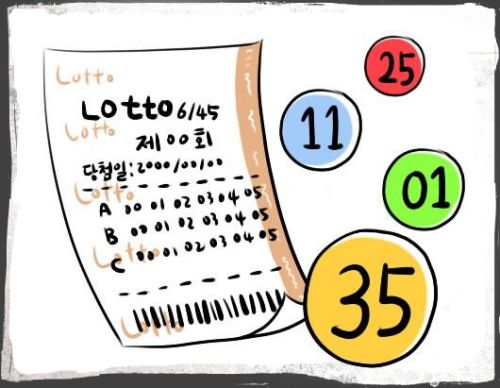Lottery Jackpot Considerations: How Is It Calculated?

The lottery world is so exciting and mesmerizing! If you’re anything like us, you’d want to know the ins and outs of just about every single lottery-related aspect. One of these aspects that probably gets people most excited is the lottery jackpot.
Winning lottery jackpots – who doesn’t dream about that? How exactly, however, is the size of the jackpot calculated? What does it depend on, and who decides how much is going to be paid out to the big winner?
How to Win Lottery Jackpot Considerations: The Different Models
How the jackpot is calculated depends on the specific rules of the game.
Several key factors will determine the payout and if the jackpot could potentially grow in the event of no winner.
Some lotteries (usually smaller local or daily games) have a fixed jackpot. The sum is announced, and this is what you get in the event of winning. Fixed jackpots don’t roll over, and the odds of winning tend to be much higher.
The fixed model, however, is not the most popular one. The biggest lotteries out there use the pari-mutuel methodology.
What’s Pari-Mutuel Lottery Jackpot?
Pari-mutual sounds like a pretty fancy term, but in reality, it’s something simple.
When learning how to play lottery jackpot for optimal chances of success, you need to know whether you’re participating in a fixed game or a pari-mutual game.
The term pari-mutual refers to the fact that the jackpot (and potentially some other prizes) will be a percentage of the funds generated through ticket sales.
What does this mean for players? If the drawing generates a lot of interest, and many people buy tickets, the size of the jackpot will increase. It’s not a fixed sum; it is a percentage out of the money that has been collected for the respective drawing.
Pari-mutual games are the ones that produce the most significant prizes out there. There is usually a minimum guaranteed jackpot that’s announced in the rules of the game. Most often, however, such lotteries feature a jackpot that goes way higher than the announced minimum.
There is one more important characteristic you need to keep in mind if you’re going to be playing a pari-mutual lottery.
There is no fixed jackpot. This means that the percentage that’s to be allocated to the top prize will be split among all of the people who get the particular numerical combination correct. Let’s say, for example, that the jackpot for a specific lottery is one million dollars. If you are the only one who has the correct set of numbers for winning the jackpot, you will win one million dollars. in the event of three other winners apart from you, the one million dollars will be split into four equal parts. All of you will go home with 250,000 dollars.
Thus, to sum things up – jackpots in pari-mutual games depend on the number of tickets sold for the respective drawing and the number of the winner for the top tier.
Real-Life Examples: How Are Powerball and Mega Millions Jackpots Calculated?
Now that you know the theory let’s take a look at an actual lottery example.
Powerball and Mega Millions are two of the world’s most popular lotteries. They are known to produce the biggest jackpots ever, but how are the sizes of these spectacular awards determined?
The Powerball jackpot starts with a guaranteed minimum amount of 20 million dollars. If there is no winner, this sum will roll over and be added towards the amount for the next drawing, helping the jackpot draw and potentially skyrocket.
As per the official Powerball rules, the jackpot has to grow by a minimum of at least five million dollars for each drawing that does not produce a winner. Usually, however, the jackpot tends to grow by a lot more, and that’s due to the number of tickets being sold.
The bigger the jackpot, the higher the interest in the game. This means that more tickets than usual will be sold, and a more substantial sum will be allocated towards the top prize.
Mega Millions follows the same principle. While the two rules have different odds and methods of playing, how the jackpot is calculated, and how it grows remains the same for both of the top two US lotteries.
Taxation and Annuities
Two final things need to be examined in connection to the size of lottery jackpots.
First of all, the sums being advertised for a particular drawing do not include income taxes. Thus, players will only get the amount that has been advertised for the drawing if the respective country does not impose an income tax on lottery prizes.
Second of all, players are most often given two payout options when they win the jackpot.
The first one is a lump sum payment. The player gets the entire amount at once and is free to do with the money whatever they want. Annuity payments are the second option that’s seen as less desirable by most players. In the case of annuity payments, the jackpot is divided into equal annual payments that are provided throughout a pre-determined type period (most often, this period is 20 years).
Players who opt for annuity payments will receive a bigger jackpot than those who decide to get the entire lump sum.
There’s a simple reason for this incongruity.
In the case of Powerball, players who choose lump sum payments will receive approximately 50 percent of what a winner who choose annuities will get. Annuity payments enable the lottery to win interest money on the amount that has not been paid out to the player yet. Thus, the lottery will benefit from those who choose annuity payments. To reward their patience, the lottery will offer a bigger payment to those who opt for annuities.
So, there you have it!
Lottery jackpot calculations aren’t all that complicated. Usually, the method of award accumulation is announced as a part of the game rules. If you want to have a better idea about the game you’re participating in, you should acquaint yourself with the rules and the jackpot calculations in advance.

Marry Levental is a writer and content contributor at LotteryPros with a genuine passion for both lotteries and storytelling. Known for her energetic writing style and attention to player concerns, Marry covers everything from platform reviews to industry news with clarity and heart. She brings a balanced perspective to her articles, always aiming to help readers make informed, confident decisions. Her enthusiasm for the lottery world is evident in every piece she writes.